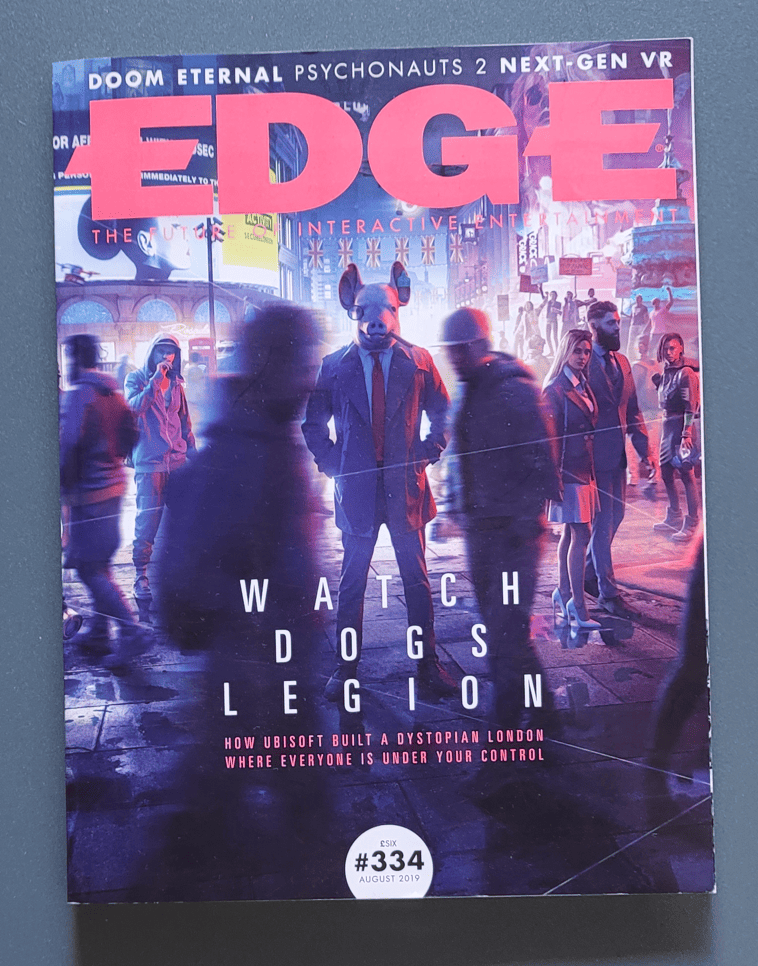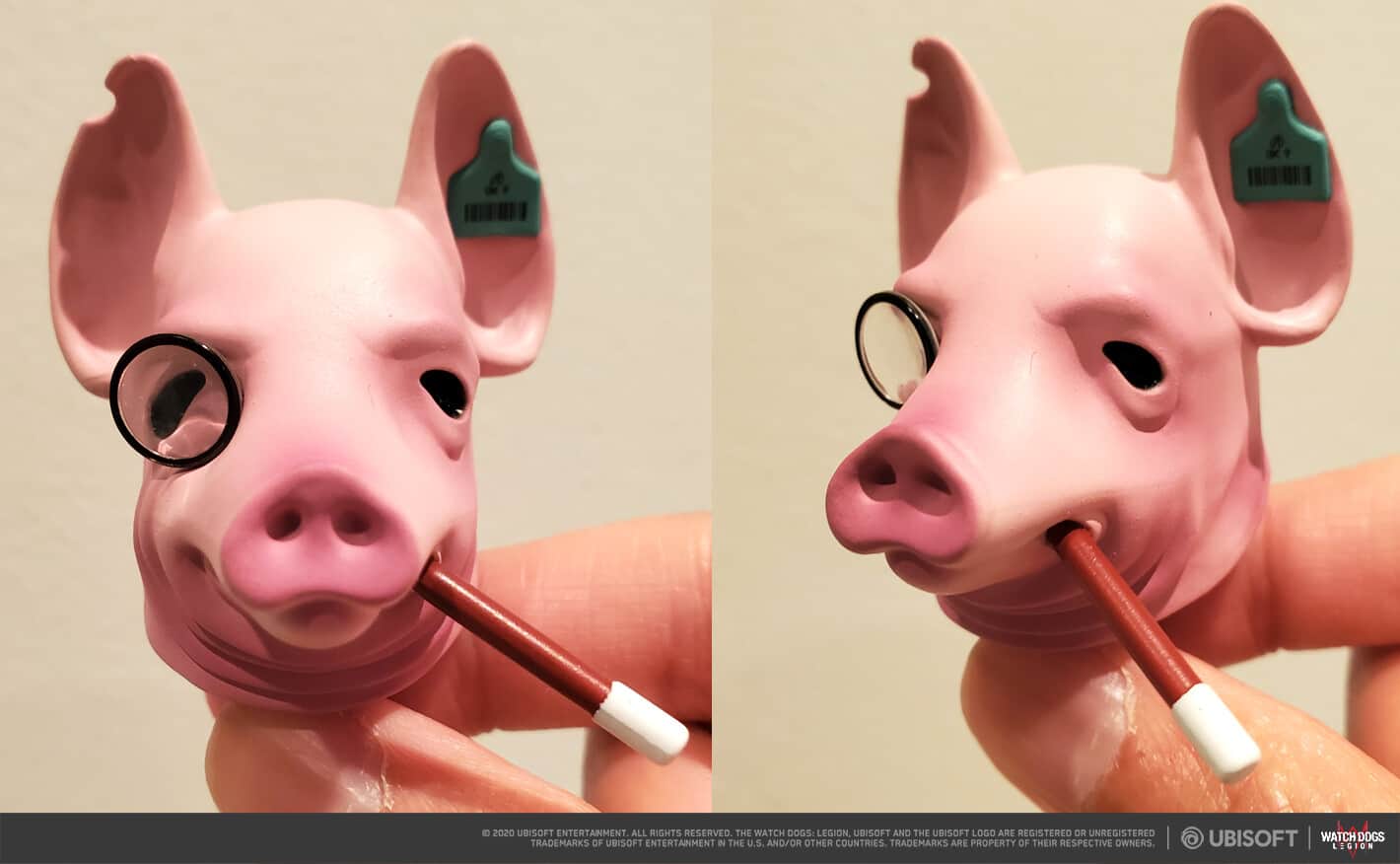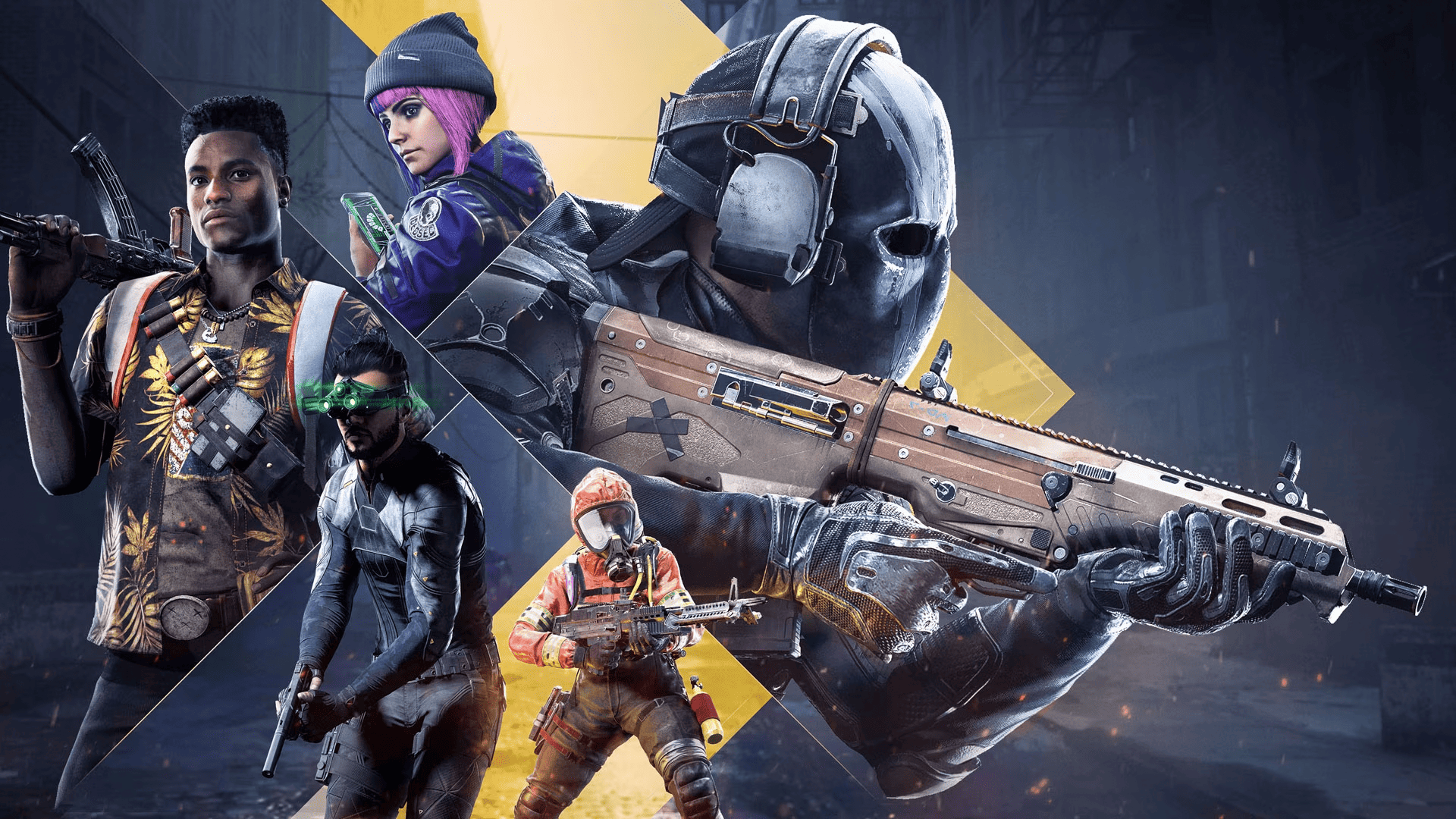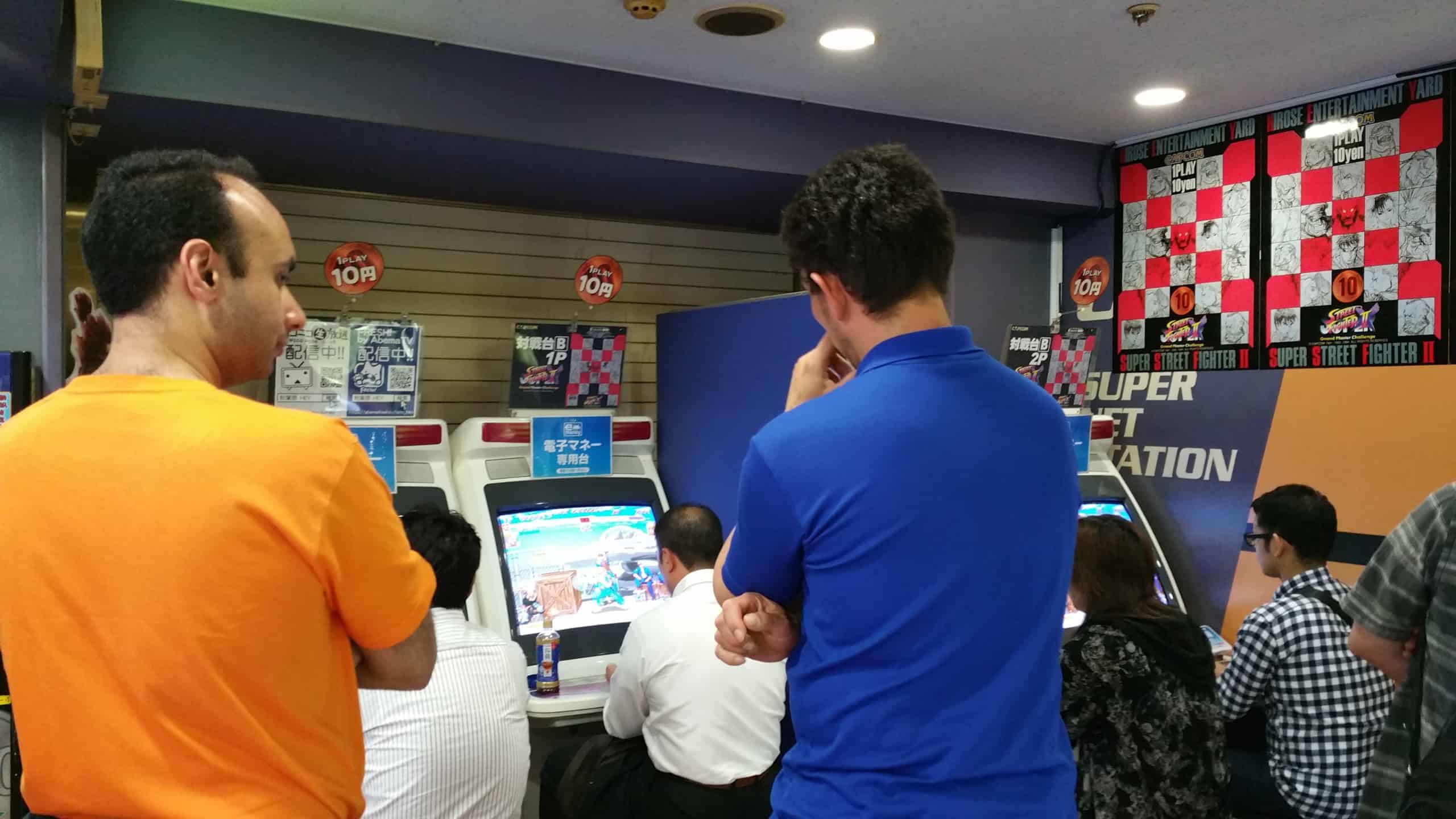An avid doodler and gamer, Rag has fond core memories of playing games on the Commodore 64 and duking it out in Street Fighter 2 at the arcade. Today, he’s combined his passions at our studio as a Senior Character Artist on the Splinter Cell remake. His current mission: to create enjoyable memories for others through games and help inspire the next generation of artists!
Hey Rag, tell us more about what you do as a Senior Character Artist? And what’s your favourite thing about your role?
As a Senior Character Artist, my role is to create high-quality 3D character models for Ubisoft franchises. This can range from creating detailed faces, clothing and accessories for any given character, to working with marketing departments to help make promotional materials and merchandise for upcoming Ubisoft titles.
The process involves working with the concept design, rigging, and tech art teams to identify key areas where we can push the level of detail on any given character.
One of the most exciting parts of my role, aside from being a part of the art and design process, is making characters that players will be able to take control of and play with, as well as seeing their reactions to them!
What qualities or traits does it take to excel in your role?
Video games on this scale are rarely made by one individual, it can take years for one single game to be released! I work with amazing people at Ubisoft Toronto and we all come from a wide range of diverse backgrounds and experience. And so, one of the key traits is being able to work in a team environment.
Having a solid foundation in art and design and strong communication skills are also extremely useful. This will help you not only communicate ideas to your team members but to other departments as well. Some games and teams require a more artistic approach while others may need a more technical understanding. As a character artist it is important to have both skills.
Most importantly, never stop enjoying the process of creating art! I often tell people I work with “we are creating fun for people” so we as artists should have fun as it will show in the end product.
How did you pick up the skills required for your role? How do you continue to hone them?
Originally, I trained in fine art, learning human anatomy, colour theory and art/design principles. Later, I developed skills in product design, animation, and story boarding, and now apply this knowledge in 3D art packages to create characters and concept art.
I found that my training in traditional arts aided my understanding of 3D tools as at the time there was no YouTube for help. Most of my learning of 3D tools was self-taught through books then later video tutorials.
The tools I use to create 3D character art are Maya, Zbrush, Marvelous Designer, Photoshop, and Substance Painter, and I use the internal engine to finish the assets for the game.
Furthermore, I enjoy creating art in my free time. I like nothing more than designing and creating characters and relish any opportunity to do so be it in 2D or 3D. In fact, if I ever find myself stumbling over an issue in 3D, I work out the problem by traditionally drawing it out.
During the pandemic I made it a goal to finish an entire notebook full of doodles and the results of this can be seen on my Instagram page.
What are some tips you’d give to someone hoping to land a similar role to yours?
The best advice I can give is, draw, sculpt, paint and create as much as you can. This is not just a hobby and many students and junior artists I have seen think that creating 3D models is all we as character artists do. Our role at times can be very technical, so having a solid foundational knowledge on colour, shape and design helps when using 3D art packages as the same principles in the real world are applied in the virtual one. Taking an art foundation course can be highly beneficial in learning the various aspects of traditional art as well as the digital realm. Then as you gain experience, you can specialize in whichever art field that appeals to you.
CAREER JOURNEY
What did you do before working at Ubisoft Toronto? How did you break into the video game industry?
If it involved art in some way, I wanted to be a part of it. Prior to joining the video game industry, I spent time in other creative fields such as animation and story boarding for television. While my previous creative ventures were great, my heart was always in video games.
My first role in the video game industry was as a UI artist for a Nintendo DS title called “CSI: Unsolved.” (Funnily enough, it was published by Ubisoft!) I helped develop the animation and interface design that the player would interact with. You never forget the first time you see a title that you have worked on boxed and in the shops. I was so excited that when I received my copy I got all my team members to sign it! As of now, I have been very fortunate to be able to develop titles for various platforms from handheld devices all the way to cutting edge VR games.
What’s your favourite project that you’ve worked on?
One of the most exciting parts of Watch Dogs: Legion was my first task — to create the character Winston, or perhaps better known to some as the “Pig Mask.”
At the time I had no idea the “Pig Mask” would be so heavily featured in trailers and worldwide events. I saw my work on the side of buildings, posters, magazines and fan art which was very gratifying to see.

Furthermore, as I had a background in product design, I was able to work on the collector’s edition statue.
This involved working with art direction and concept art to create the initial design, I then added further details and polish, addressing feedback from the marketing team before the model was sent into mass production and brought to life! It was an enjoyable process, and I learnt a lot from collaborating across departments during this huge team effort!


As I grew up in London, I could also give advice to art directors on the best ways to represent UK culture in Watch Dogs: Legion and was pleased with the collaboration between all the art departments to bring London to life.
Aside from Watch Dogs: Legion, you also worked on XDefiant. Can you tell us about a key role you played in that project?
I was working with the talented XDefiant team during the Covid pandemic when we were all working from home.
Working remotely was a challenge that I had to adapt to, but in a way, it allowed me to extend my Ubisoft connections and work with the core team based in San Francisco.
Also, having played first person shooters (FPS) most of my adult life, I was eagerly interested in working on a AAA FPS game!
With XDefiant, our goal was to design and develop characters inspired by popular Ubisoft franchises, for example Splinter Cell, Far Cry 6, and Watch Dogs to name a few. One of the key strategies was to break down the designs so that each character and faction had a unique look and feel.

My role on the team was to develop characters in the Splinter Cell-inspired faction “Echelon” making clothing assets and texture work. Furthermore, I aided the character art director remotely and in-person when required, creating technical documentation to help the character team further.
Today, I’ve moved to working on the Splinter Cell team and have shifted from working remotely to a hybrid work environment. The studio’s hybrid and flexible work policy has been great to see friends and colleagues so we can work together in person, as well as getting to know new team members that have recently joined our project.
CURRENT PROJECTS
That’s very cool! What are you currently working on for the Splinter Cell remake? Please share what you can.
Now I can’t say too much here as Sam Fisher is watching me from the shadows! So all I can say is I am currently working on very top-secret characters that Splinter Cell fans will enjoy, watch this space!!!!
Any special memories from playing the previous Splinter Cell games? What do you think makes the franchise so unique?
One of my most abiding memories of Splinter Cell was seeing the split jump on a TV advert in the UK! When I had a chance to play it, albeit briefly at an HMV store (yes I’m old), that’s all I wanted to do!

Moreover, my big brother and I would play Splinter Cell: Conviction’s co-op mode online. We would choose the hardest setting and see if we could infiltrate without being spotted, great times! As a massive fan of stealth games, what I love about Splinter Cell is the interplay of light and shadow and the game design ideas that can be generated from this.
What about working on the Splinter Cell remake has you excited?
Being involved in an iconic franchise like Splinter Cell is a dream come true. The most exciting part for me is working with extremely talented character artists on our team to help push the level of quality that video game players will enjoy. Now with the advancements in new technology and rendering techniques such as ray tracing, it’s amazing to see the technological leap in graphical fidelity to bring the world of Splinter Cell to life for new and old fans alike.
LIFE AT UBI
Can you describe the Character Art community within Ubisoft?
In our character art team, we have many people from diverse backgrounds and skillsets. We all like to collaborate and share knowledge and push our work further together which is great to see. More importantly, we are all passionate about art and video games and like many fans around the world, we all eagerly await new game releases to play, discuss and learn from.
BONUS
What do you do to relax?
I love to travel and learn from different cultures. The best trip I’ve had was visiting Japan, I had a blast!!! One of my fondest memories was playing old school Street Fighter 2 with many Japanese businessmen who’d gather at arcades to play after work before heading off to their families.

I also enjoy working out, learning languages and studying history, and often like going to museums as it helps me generate more ideas for characters. Furthermore, I love watching world cinema especially martial art films! I regularly draw, create and upload my doodles to Instagram and of course play video games (I’m eagerly awaiting the release for Street Fighter 6!)
Video games have always been very important to me since playing my very first game on the Commodore 64 back in the day. I often recall the first time I saw Street Fighter 2 in the arcade. Watching my older brother play Blanka and seeing his electricity attack for the first time, my young mind was blown!
Now it’s one of my missions to make enjoyable memories for others through games and help inspire the next generation of artists!
People of Ubisoft Toronto is a series featuring studio members from a variety of projects and backgrounds as they share their experiences at our studio, perspective of the video game industry and, perhaps, even a sneak peek of what they’re working on!
Our studio values diversity and believes in embracing differences to build stronger and more creative teams. We welcome people who would like to join us and redefine the future of games. Visit our careers page for more information on open roles and how to apply. To know more about our studio members and culture, click here.

